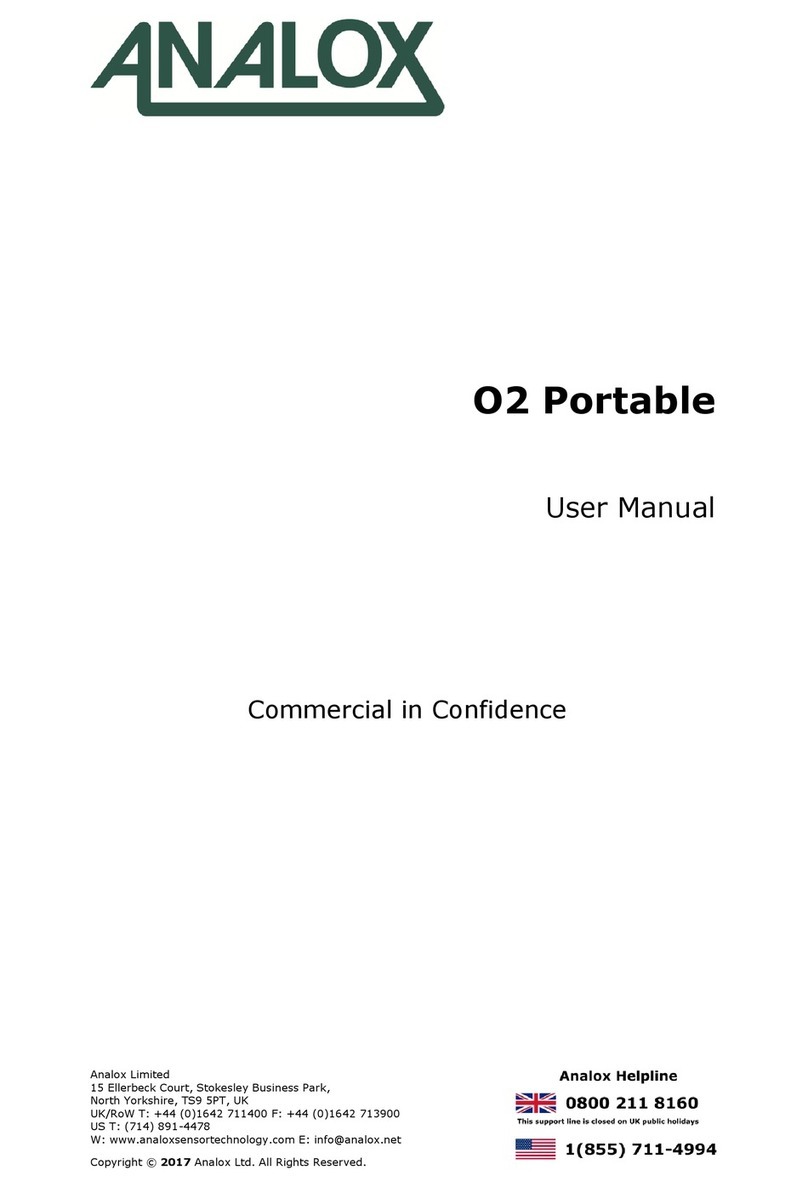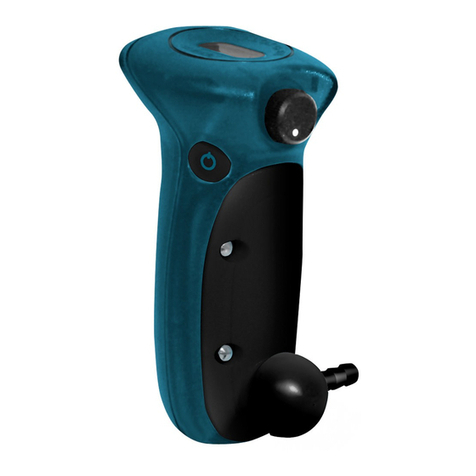
Analox 50 – Carbon Dioxide Analyser – User Manual
Document Ref: A50-811-19 – September 2014
Page 9
1. SAFETY NOTES
Every gas monitor installation should be risk assessed. The correct
location of monitor(s) must consider the potential sources of gas leaks
and the location of expected human occupation in the area. Where
large areas must be monitored, it is often advised that no single monitor
should cover a volume in excess of 80m3. The installation of more
monitors should be considered where an area is complex in shape, filled
with obstacles, has a lack ventilation or air circulation, or if there are
dead zones where gas can collect
a) The Ax 50TM must be installed according to these instructions which
should be read entirely before commencing installation.
b) For your convenience the Remote Alarm Repeater is pre-wired to the
Ax 50TM sensor unit.
c) If you need to disconnect the cable for ease of installation.
DISCONNECT FROM THE REMOTE ALARM REPEATER END
d) The system MUST NOT be switched on until all connections have been
correctly made.
e) We do not recommend you access the main unit. Potentially lethal
voltages exist within the Ax 50TM. It should only be opened by a
Qualified Technician, and must be isolated from the electrical supply
before opening.
f) The Ax 50TM does not require routine maintenance. All you need to do
is check that the green light is flashing and press the mode button
periodically to make sure that the Horn and alarm lights are functioning.
2. PACKAGING CONTENTS CHECK
The following items are enclosed:
a) Ax 50TM main unit, with power lead to a plug (where necessary)
b) User manual for standard Ax 50TM
c) Test certificate
d) Rawl plugs and screws for wall mounting
e) Remote Alarm Repeater and 8 metres of interconnecting cable
connected to the Ax 50TM.
f) Warning label






























